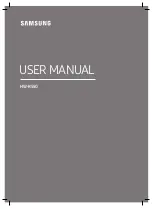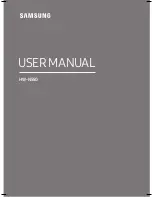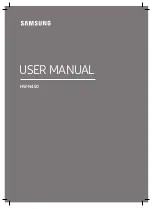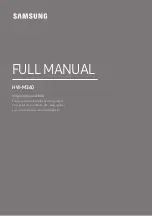
7
EUROPORT EPA800
3.3 Channel Strips
Each channel strip is equipped with an equalizer section, an
effects control, and one control each for signal routing and volume
control.
Fig. 3.3: Channel strip for a mono channel
TREBLE/BASS
The equalizer section comprises these two controls. With the
TREBLE control, you can modify the high frequencies, and with
the BASS control the low frequencies. Rotate the control knob:
V
clockwise to boost the frequency range by max. 15 dB.
V
counterclockwise to cut the frequency range by max. 15
dB.
If you use the equalizer section to boost
frequencies, the signal level of the channel
increases. If the CLIP LED lights up, you need to
reduce the level using the corresponding LEVEL
control.
EFFECTS
With the EFFECTS control, you can specify the portion of the
channel signal to be routed to the effects unit. The further
clockwise you turn the control knob, the greater the effect that is
applied to the signal. Turning the knob counterclockwise as far
as possible results in a signal with no effects.
BAL
Use the BAL control of the mono channels to adjust the position
of the signal within the stereo image (left/right) or for both mono
paths. Turn the control:
V
completely to the left to hear the signal only on the left side,
that is the LEFT/MAIN path.
V
completely to the right to hear the signal only on the right
side, that is the RIGHT/MAIN path.
Positions between these settings will result in a proportionate
signal allocation between LEFT/MAIN and RIGHT/MAIN.
The BAL control determines the levels of a stereo source’s left
and right input signals in relation to each other. Turn the control:
V
completely to the left to hear only the left signal component
of the stereo source on the LEFT/MAIN path.
V
completely to the right to hear only the right signal component
of the stereo source on the RIGHT/MAIN path.
Positions between these settings will result in a proportionate
signal allocation of the left/right signal component between LEFT/
MAIN and RIGHT/MAIN.
CLIP
When lit up, the CLIP LED indicates that the corresponding channel
is being overdriven. If this LED lights up regularly, you need to
reduce the level of the respective channel using the LEVEL
control and/or the PAD switch.
LEVEL
The LEVEL control is used to set the volume of the channel
signal. If the CLIP LED is lit up, the level has to be reduced using
this control.
3.4 Additional Connections
The EPA800 is equipped with additional inputs and outputs as
well as a footswitch connector.
Fig. 3.4: Connectors for additional devices
STEREO AUX IN
The STEREO AUX IN sockets are designed as separate ¼" jacks
and as a stereo minijack. You can connect additional devices
with adjustable line levels (e.g., other mixers, MD player) here.
The signal is sent directly to the output busses, with no further
adjustment possible. Use either the minijack or the two ¼" jacks,
not both types at the same time. For mono sources, use the LEFT
connector.
EFFECTS FOOTSW
The EFFECTS FOOTSW socket is used to connect a footswitch.
You can switch the effect on and off with the foot switch.
SUB OUT
You can connect an active subwoofer to the SUB OUT socket.
TAPE OUT
You can connect a 2-track recorder (DAT, MD, etc.) to the TAPE
OUT sockets. The two TAPE OUTs carry the output bus signals.
SPEAKER OUTPUTS
The SPEAKER OUTPUTS connectors on the back of the unit are
used to connect the supplied loudspeakers.
Fig. 3.5: Powered connectors for passive loudspeakers
3. CONTROL ELEMENTS AND CONNECTIONS































